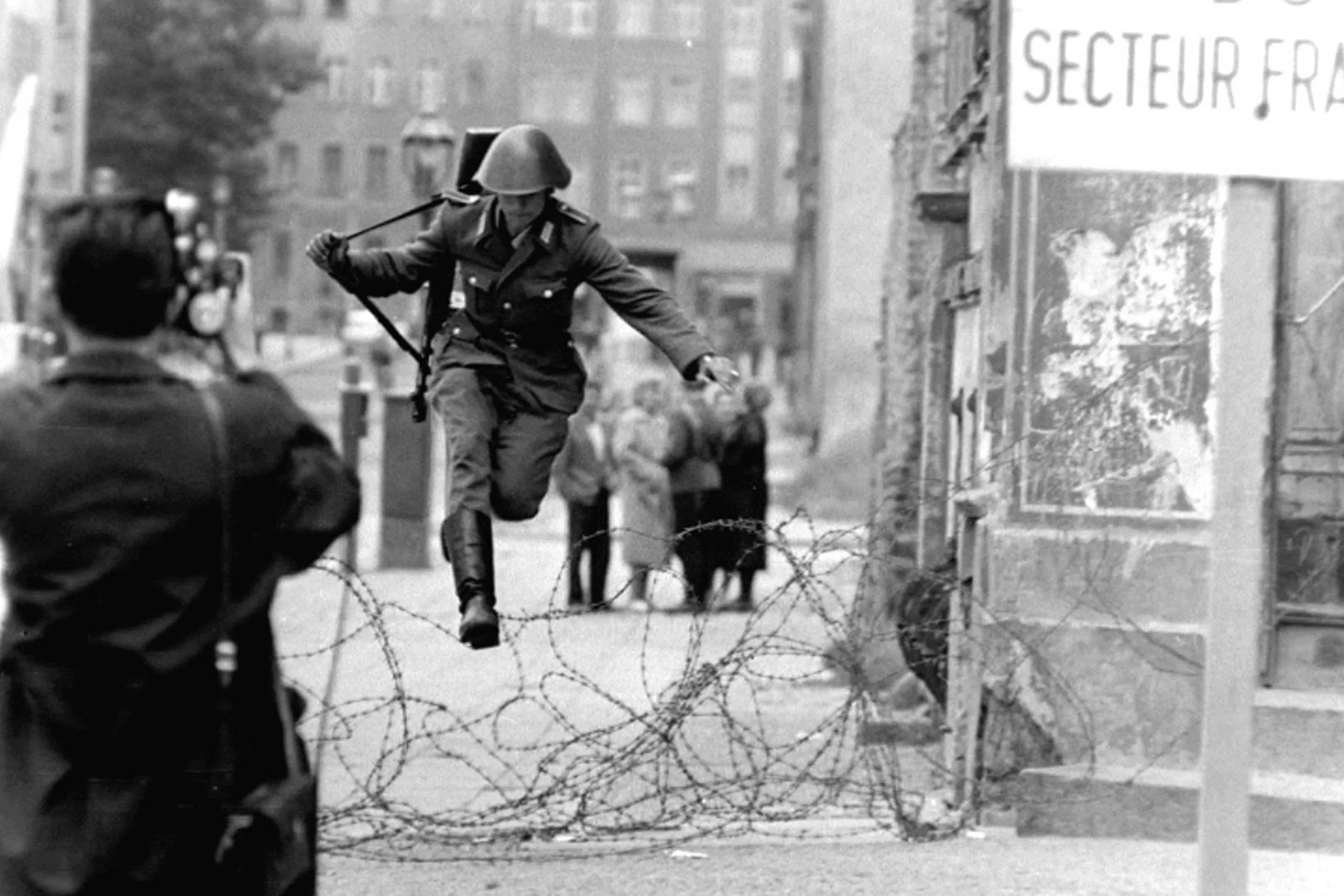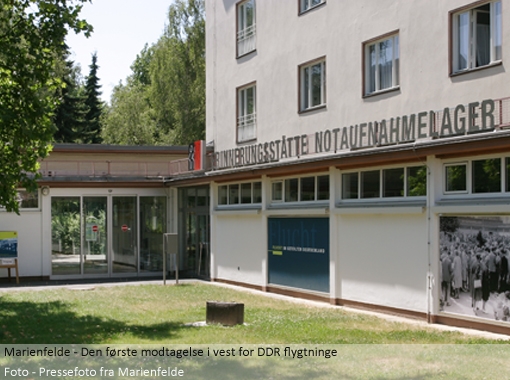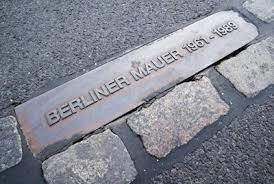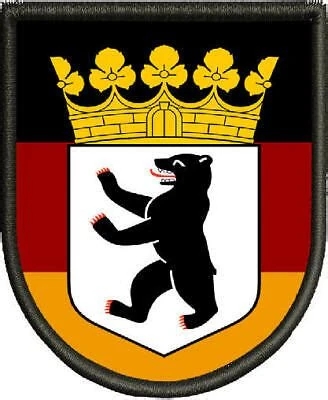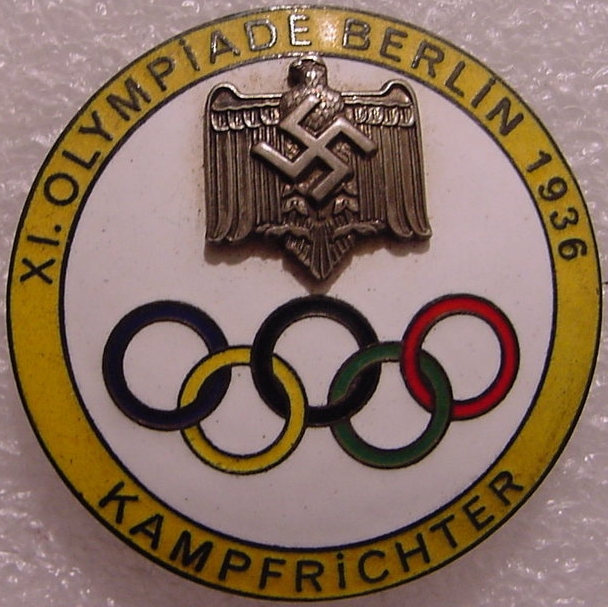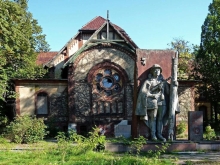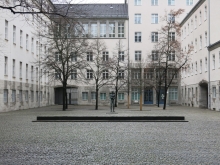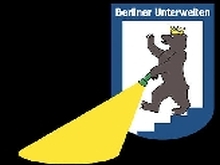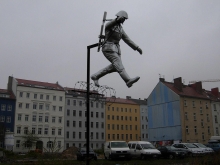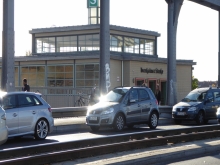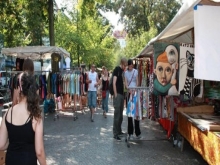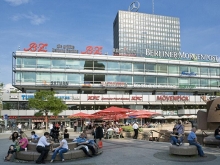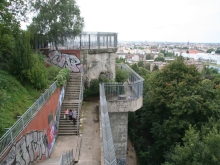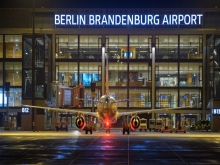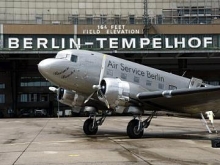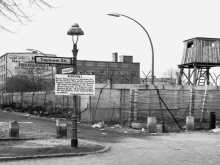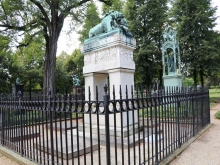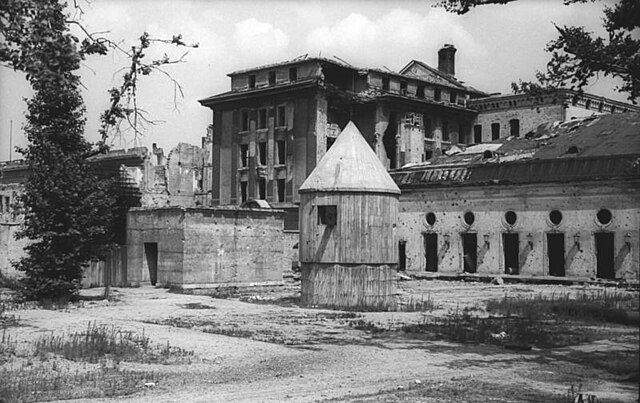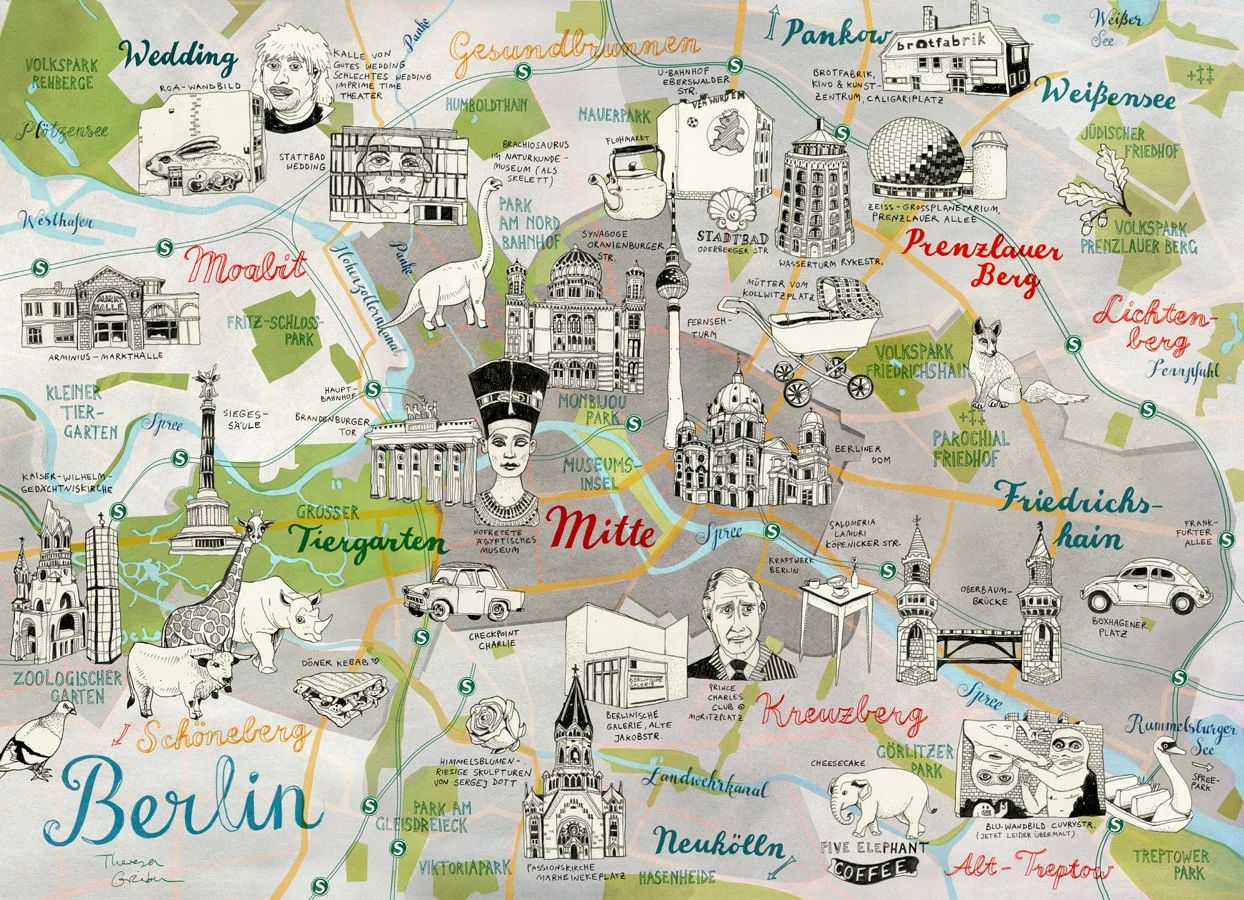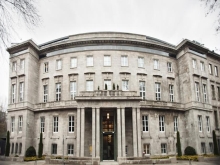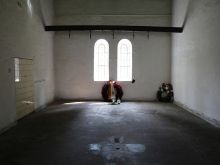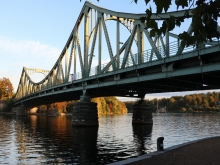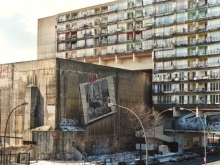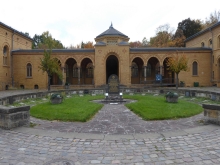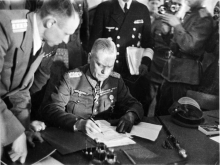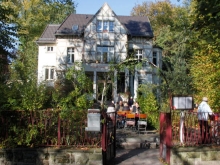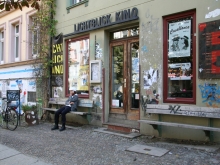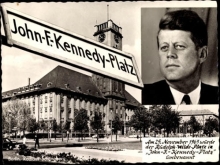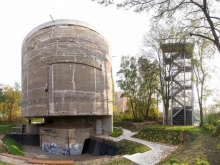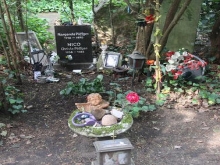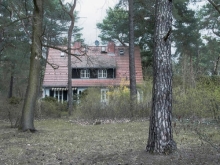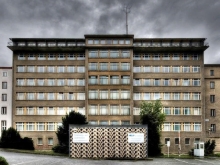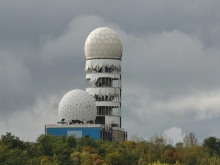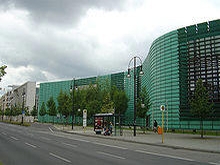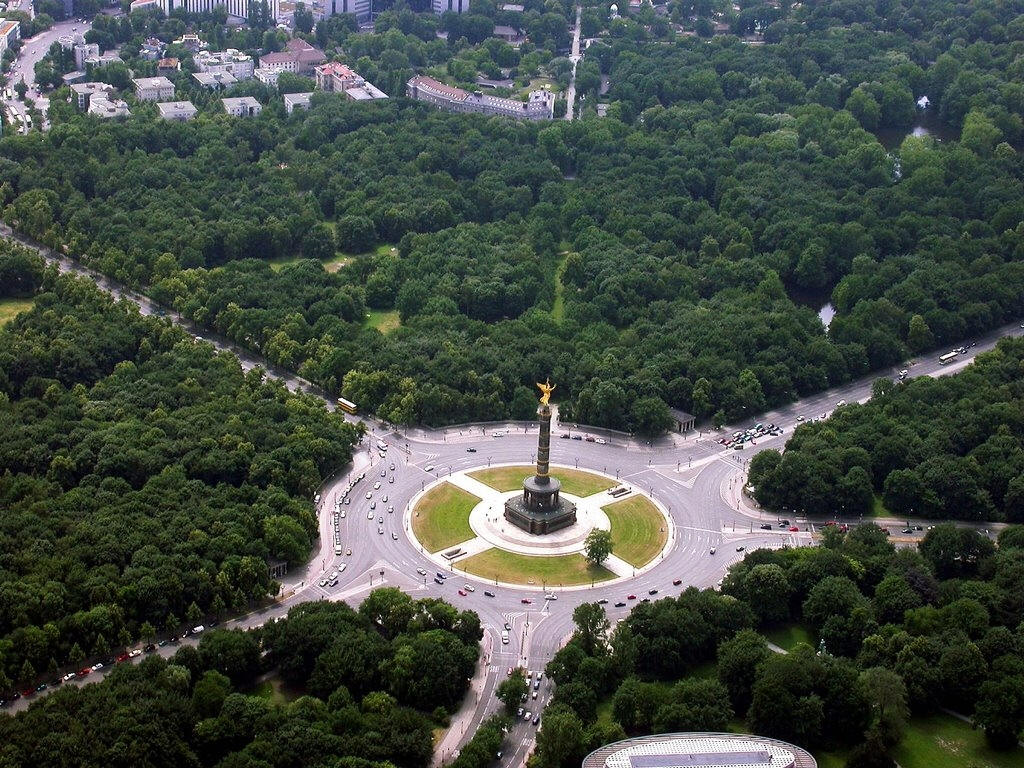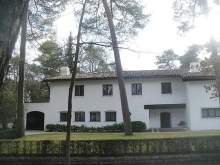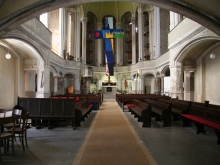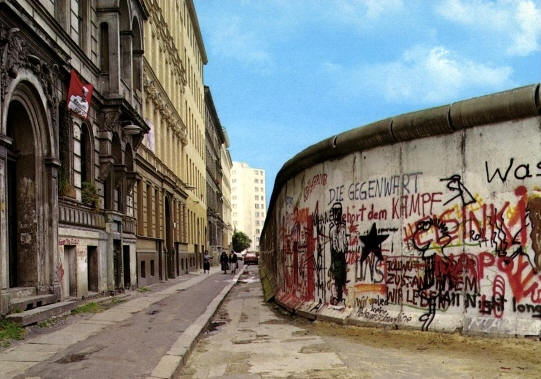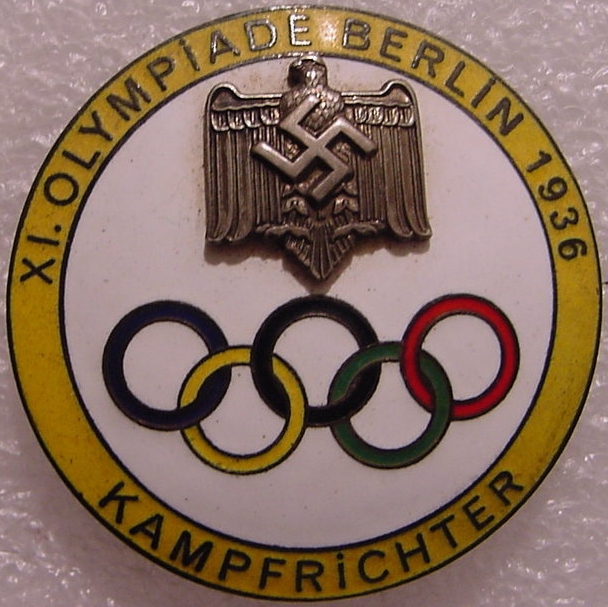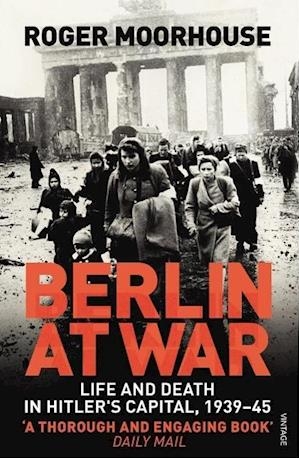Other places worth seeing and excursion destinations in other countries:
 |
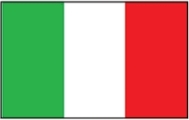 |
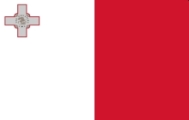 |
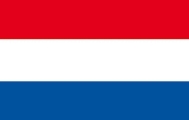 |
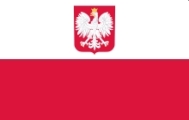 |
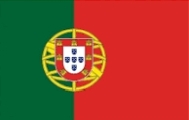 |
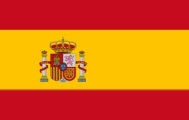 |
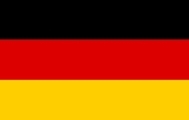 |
FR |
IT |
MT |
NL |
PL |
PT |
ES |
DE |
Link: Worth visiting in Berlin
Berlin - The Olympic Village
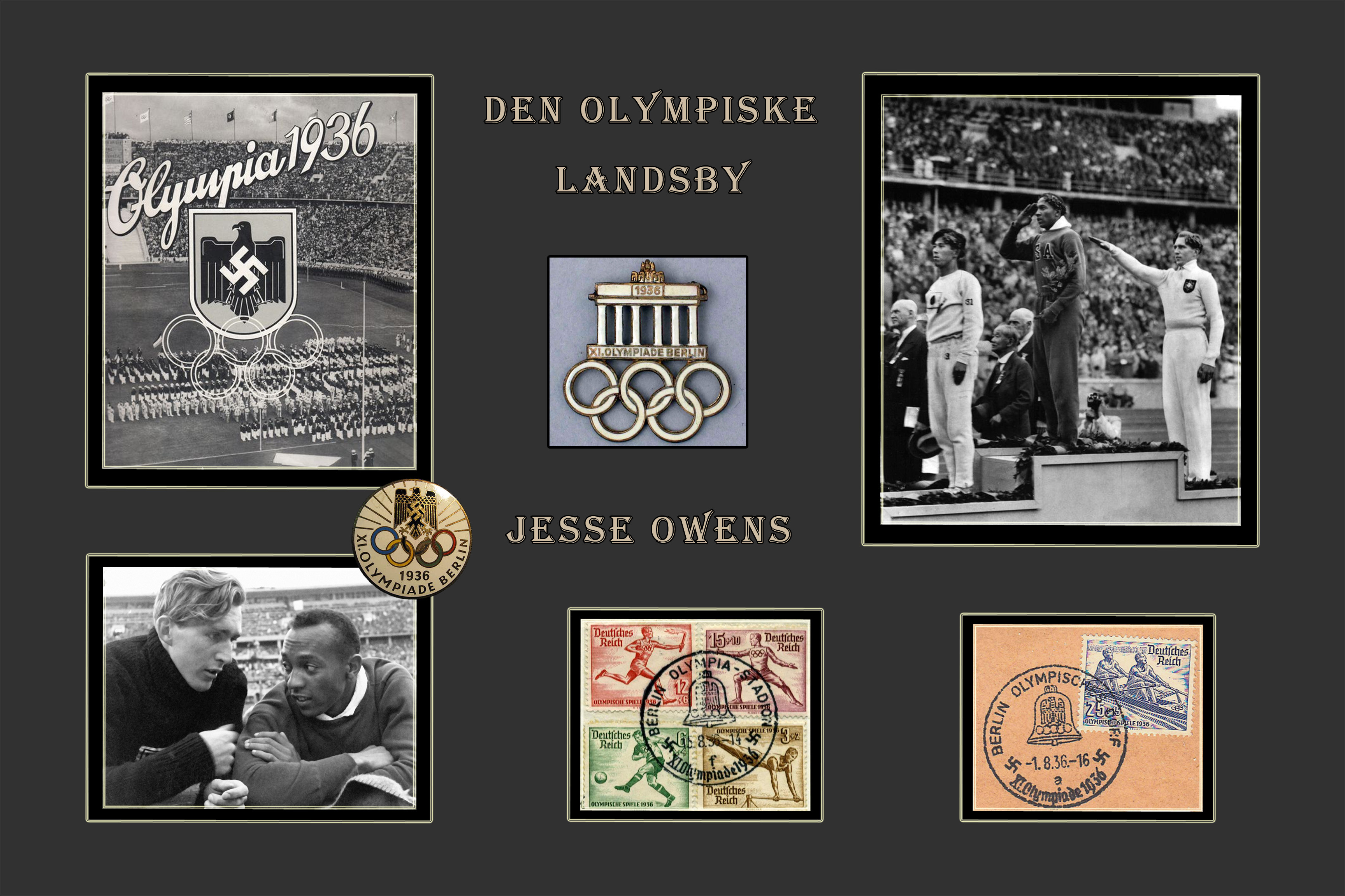
Collage with images from the 1936 Berlin Olympic Games
The Olympic Village, built for the 1936 Berlin Olympics, was a central part of the event. It served not only as housing for the athletes, but also as an important propaganda tool for the Nazi regime. The 1936 Olympics were marked by political and ideological tensions, and the village was used to portray Germany as a modern and well-organized country.
Olympisches Dorf - 1936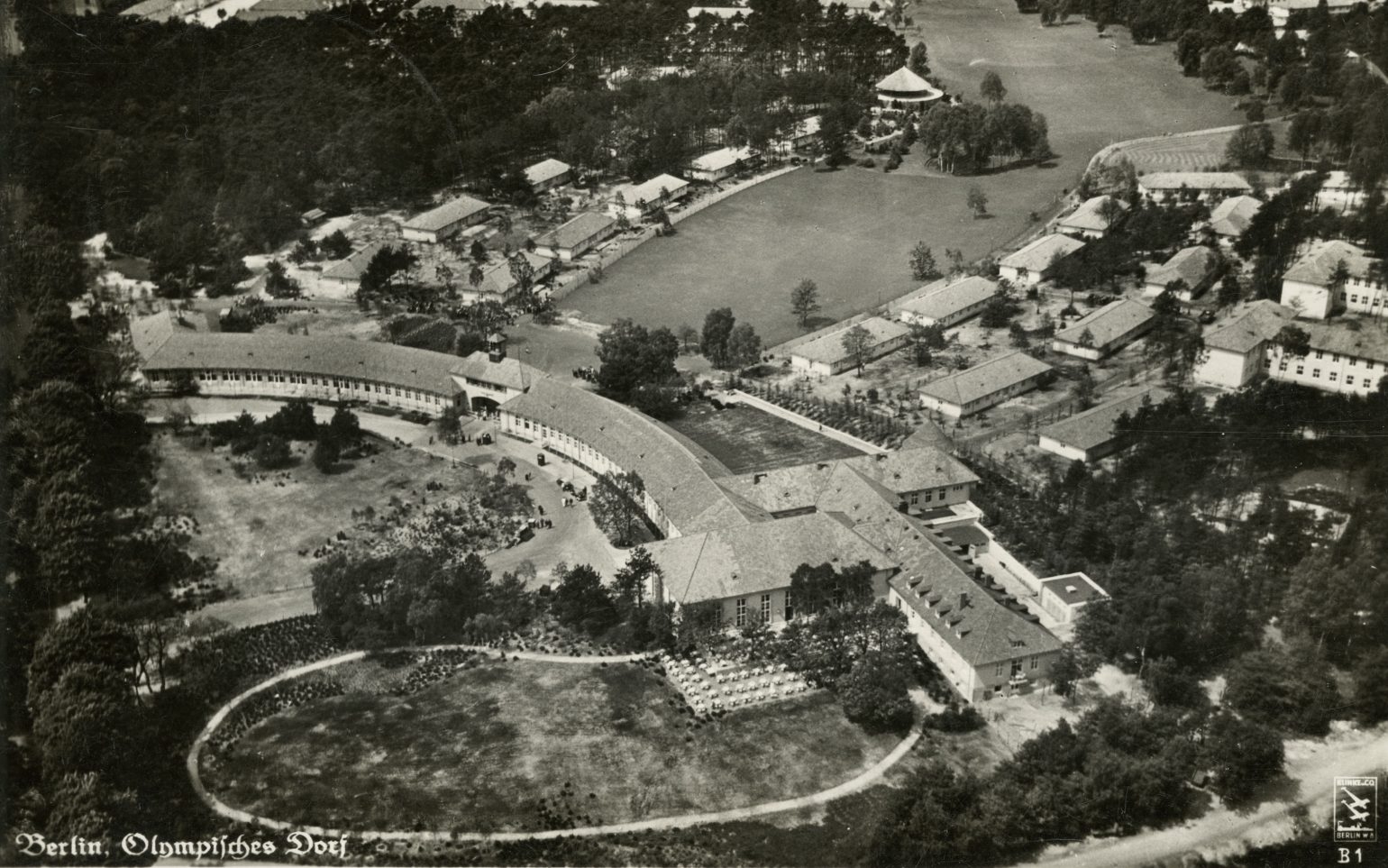
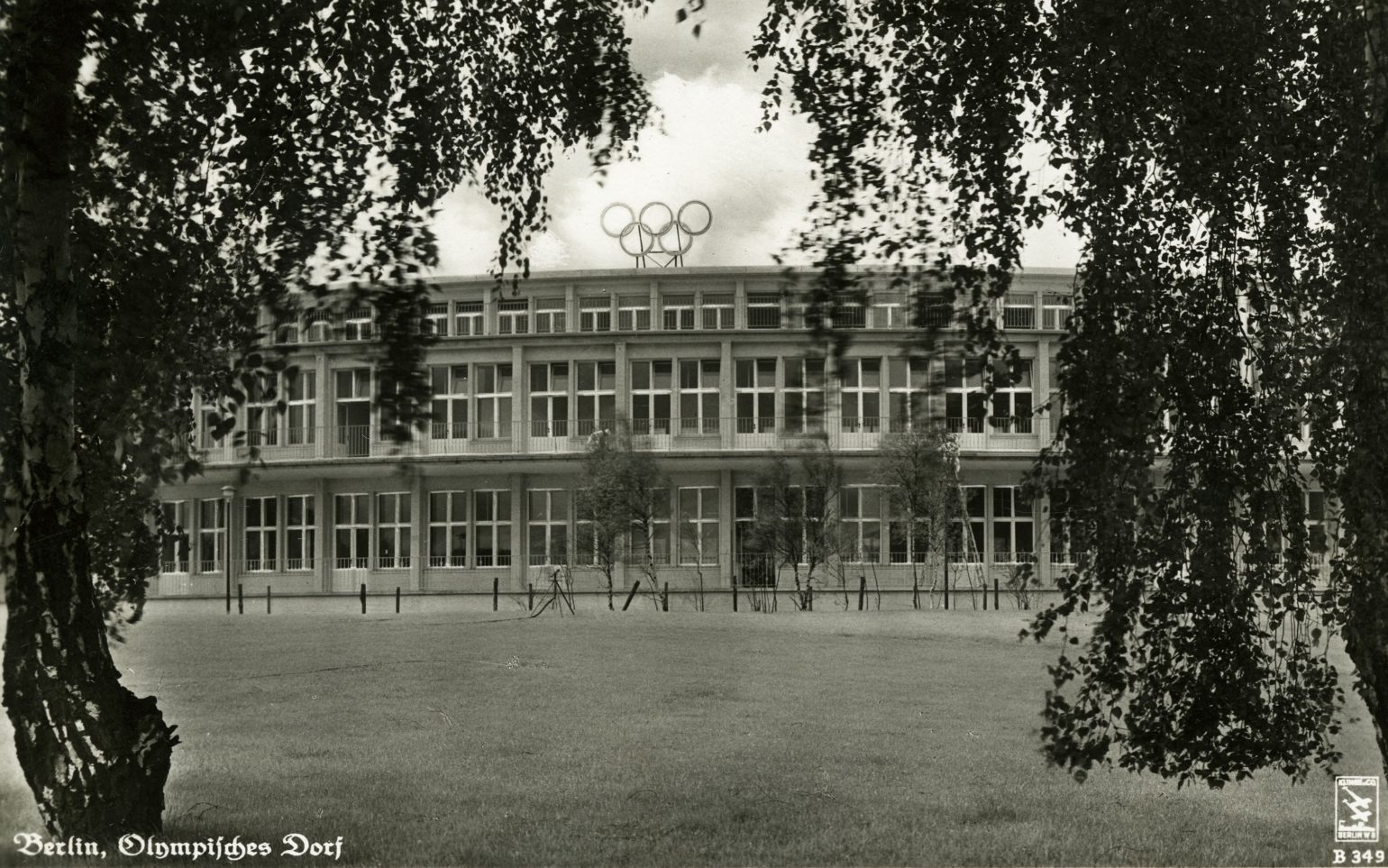 |
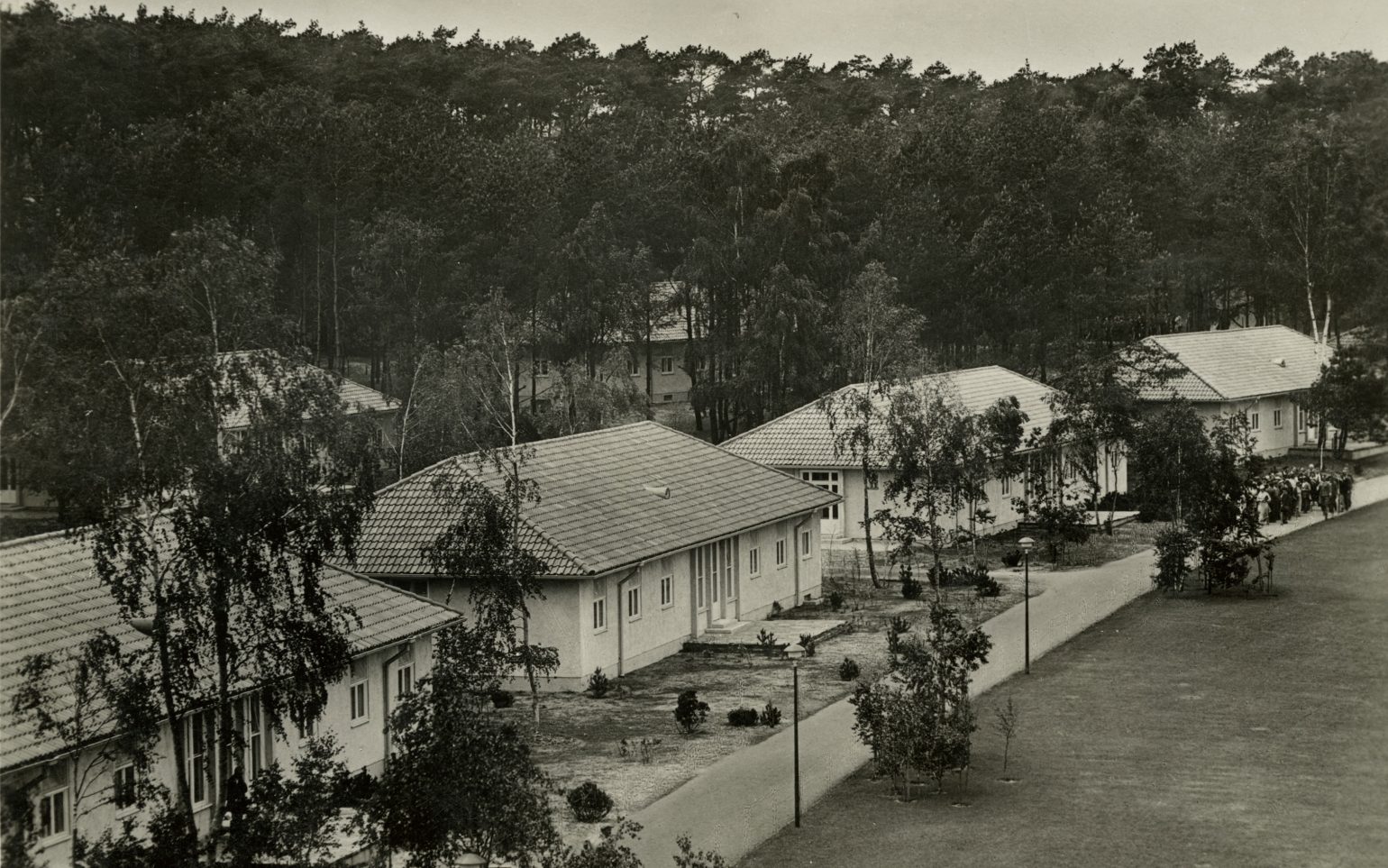 |
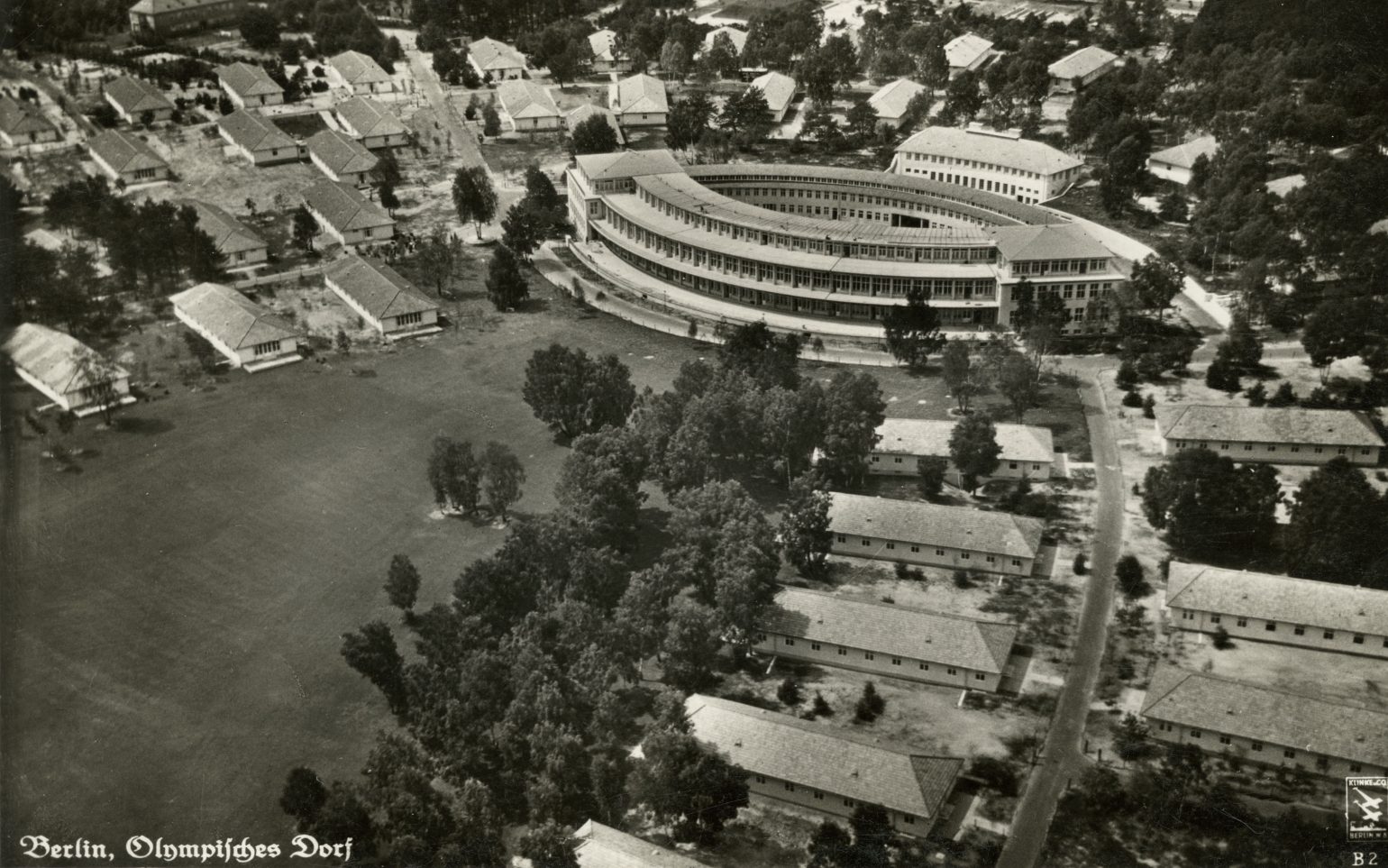 |
Location and structure
The village was located in Elstal, approximately 14 km west of Berlin, and was designed to house over 4,000 athletes from all over the world. The architecture was a mix of traditional German features and modern facilities, intended to emphasize Germany's balance between past and progress. The village consisted of 140 buildings, including apartment blocks, dining halls, training facilities, and recreational areas.
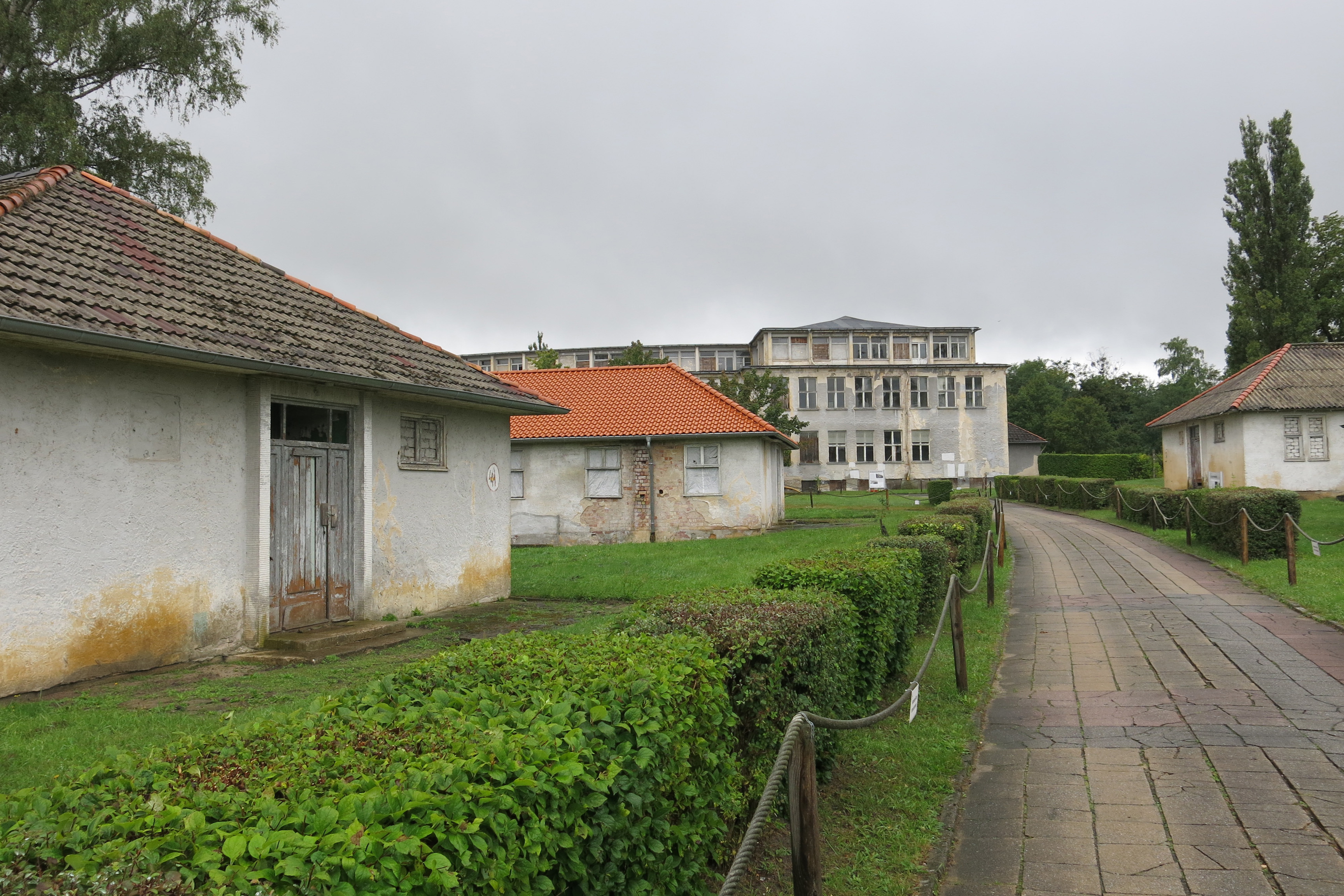
Olympisches Dorf - 2013
Facilities and comfort
The athletes had access to everything they could need. There were training grounds, swimming pools, a post office, a theater, and even a church. The village was praised for its comfort and efficiency, and it was considered one of the most advanced Olympic villages at the time. The athletes were treated with great hospitality, which was intended to create a positive image of the Nazi regime.
Propaganda and political significance
The Nazis used the village as part of their propaganda apparatus. They wanted to convince the world that Germany was a peaceful and well-organized country, even though the regime was pursuing an aggressive and racist policy. The athletes were greeted with kindness and respect, including black athletes like Jesse Owens, which stood in sharp contrast to the Nazis' racist laws.
Racial and political aspects
Despite the Nazis' attempts to conceal their racist policies, underlying tensions existed. Jesse Owens' success at the Games became an important reminder that talent and hard work know no race or nationality. Yet the village was used to promote Nazi ideology, even though many international participants and journalists were not fully aware of this.
'Jesse Owens house' - 2013
Legacy and historical significance
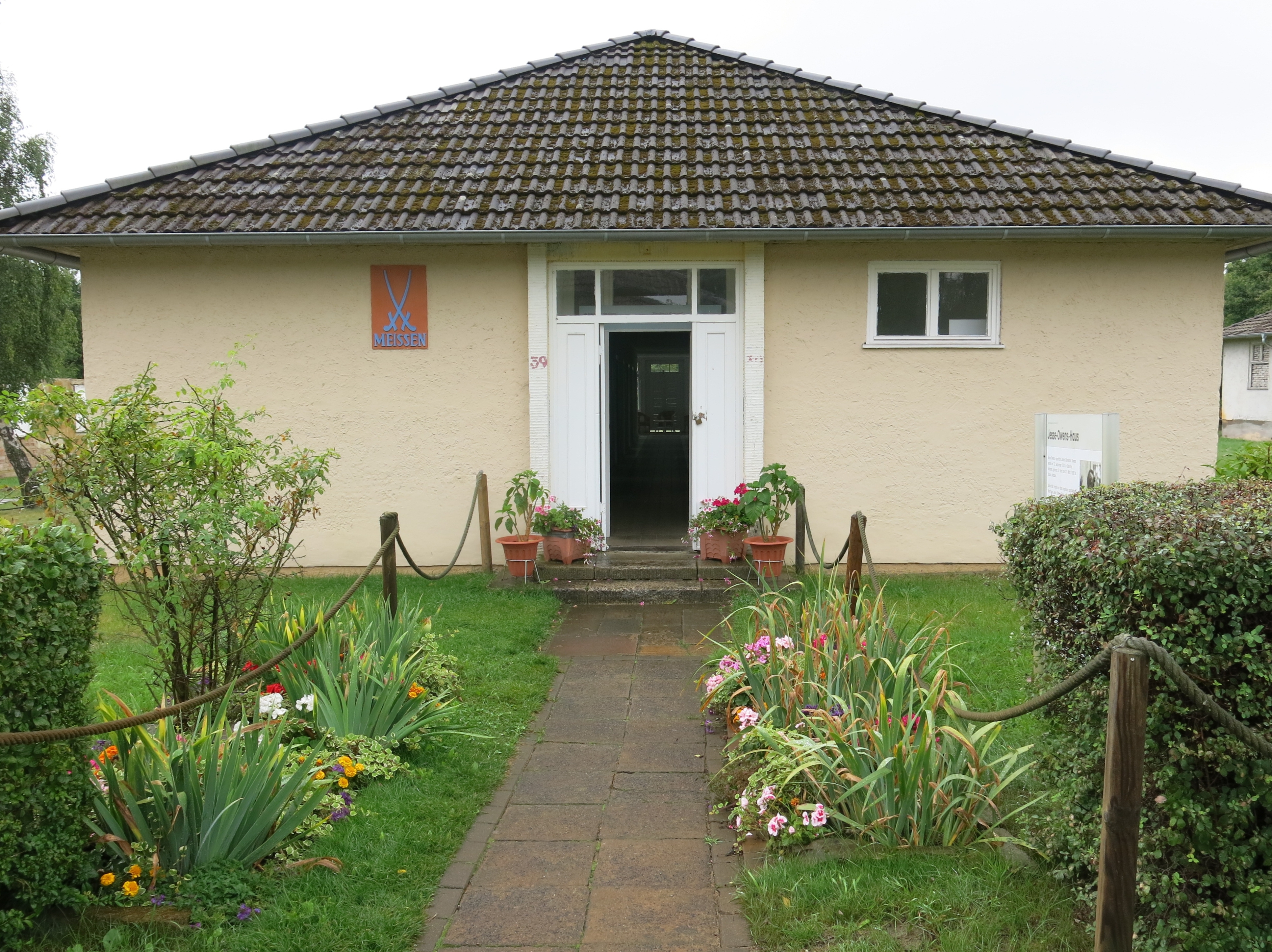
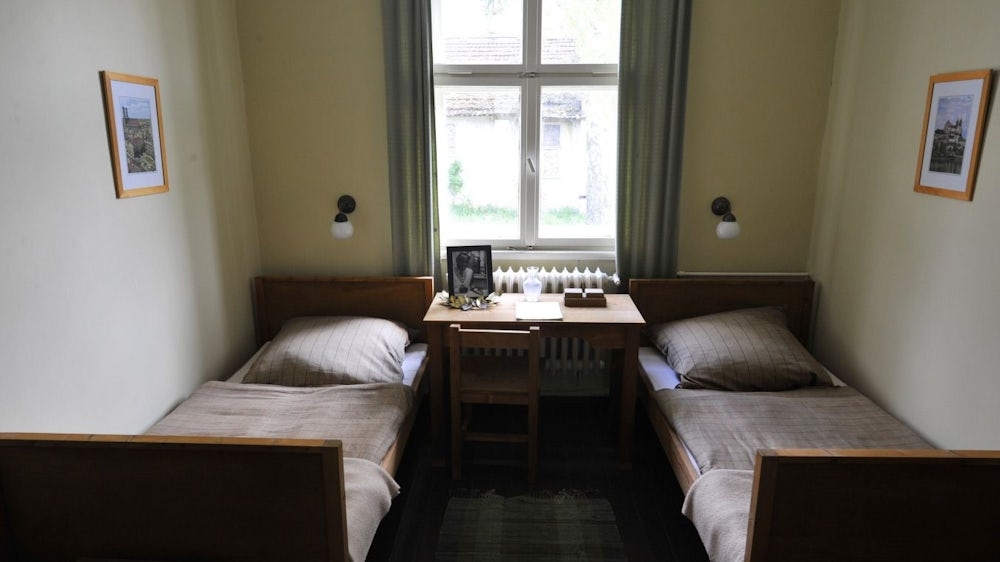
After the Olympics, the village was converted into a military base during World War II. Today, it stands as a reminder of how sports can be misused for political purposes. The Olympic Village in Berlin 1936 is a symbol of both technological progress and propaganda, and it plays an important role in understanding the relationship between sports and politics.
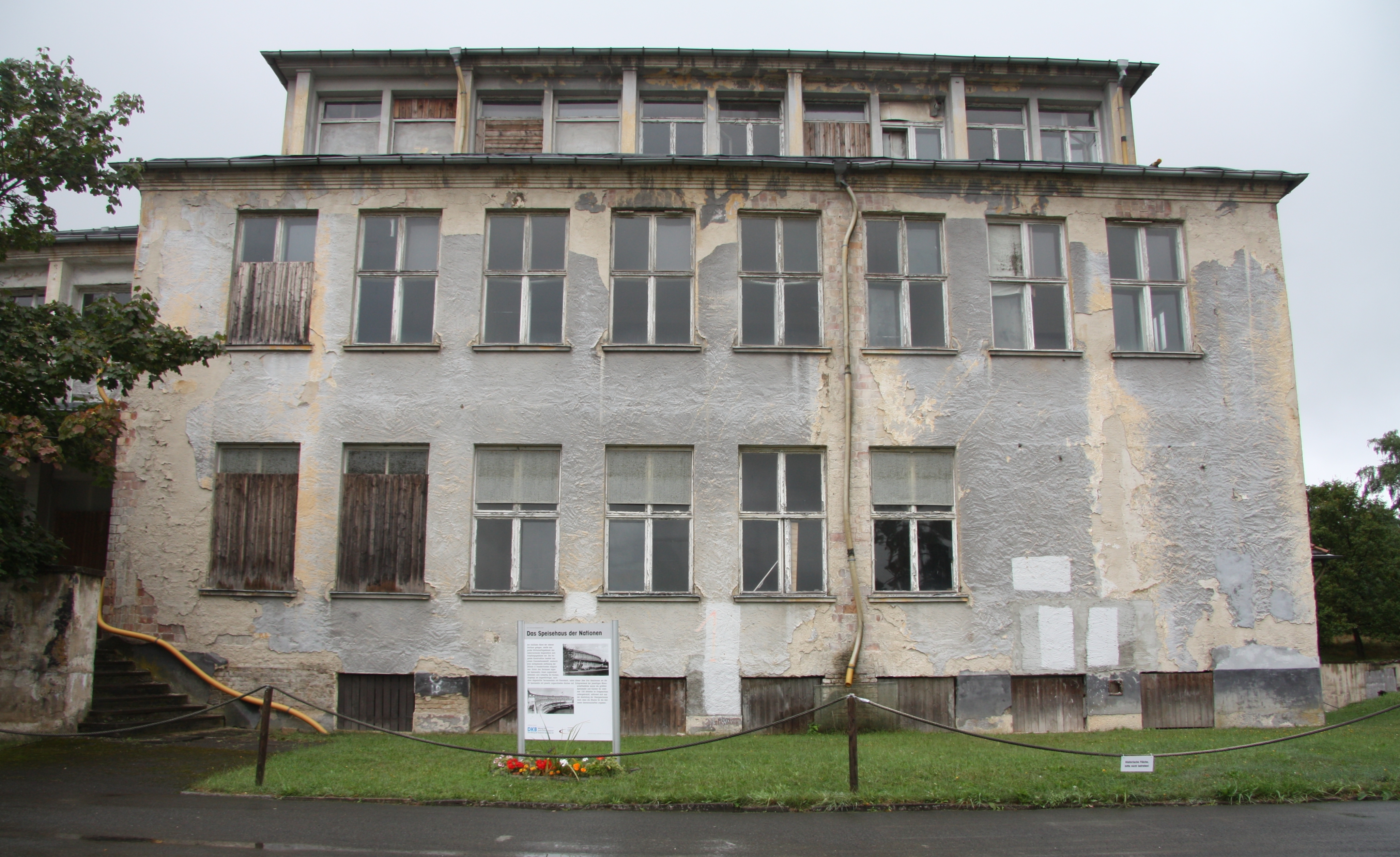
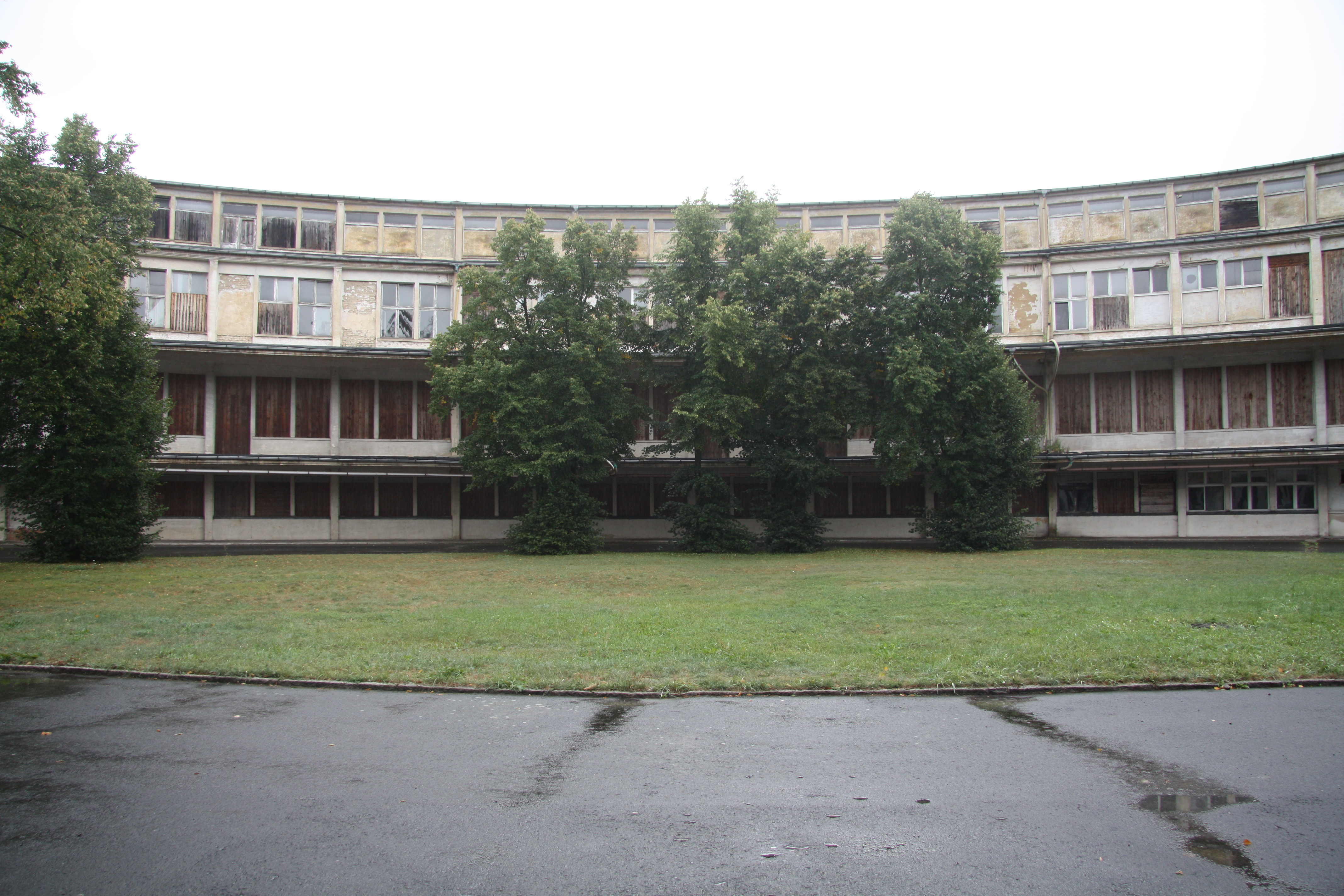 |
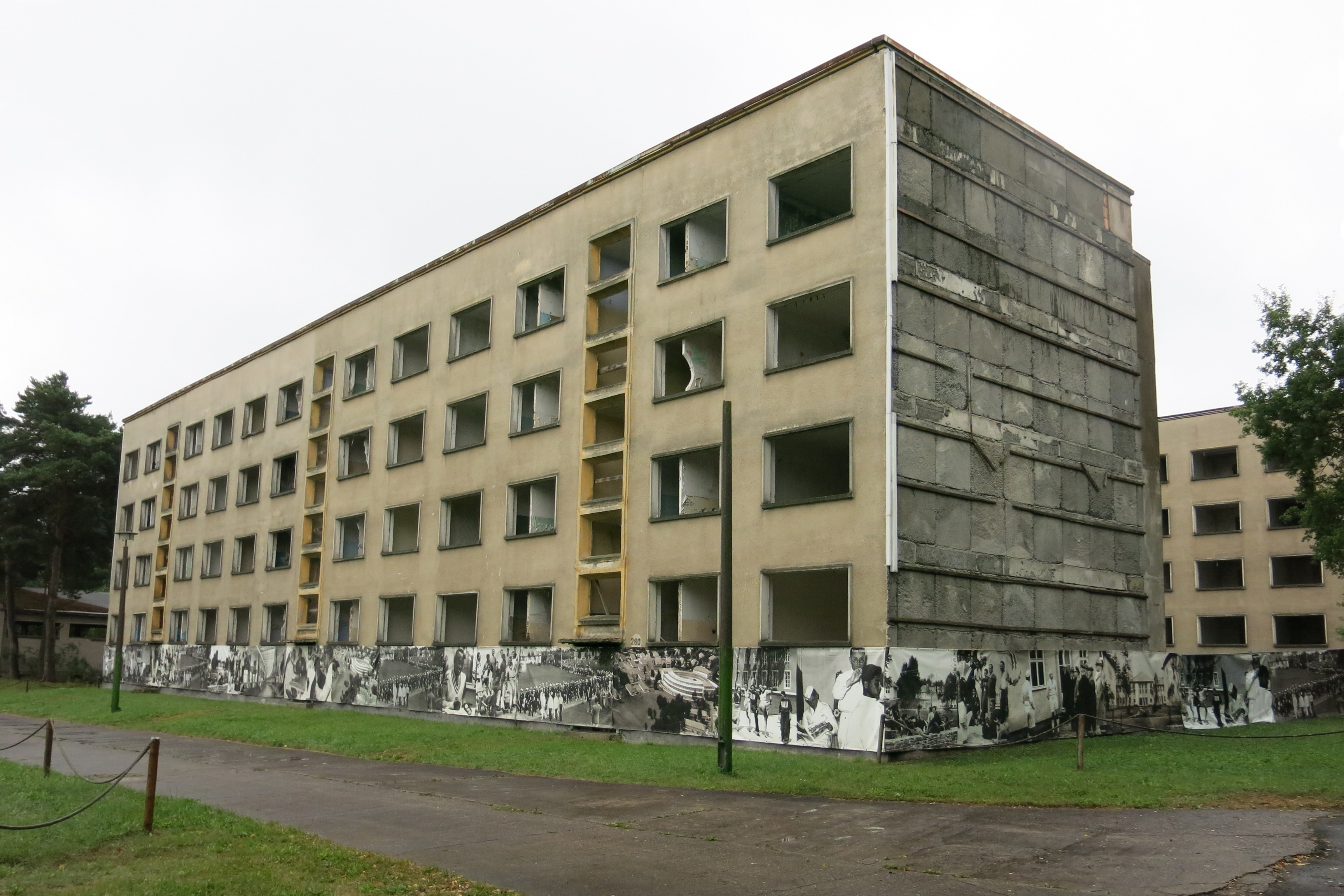 |
Pictures from the Olympic Village - Summer 2013
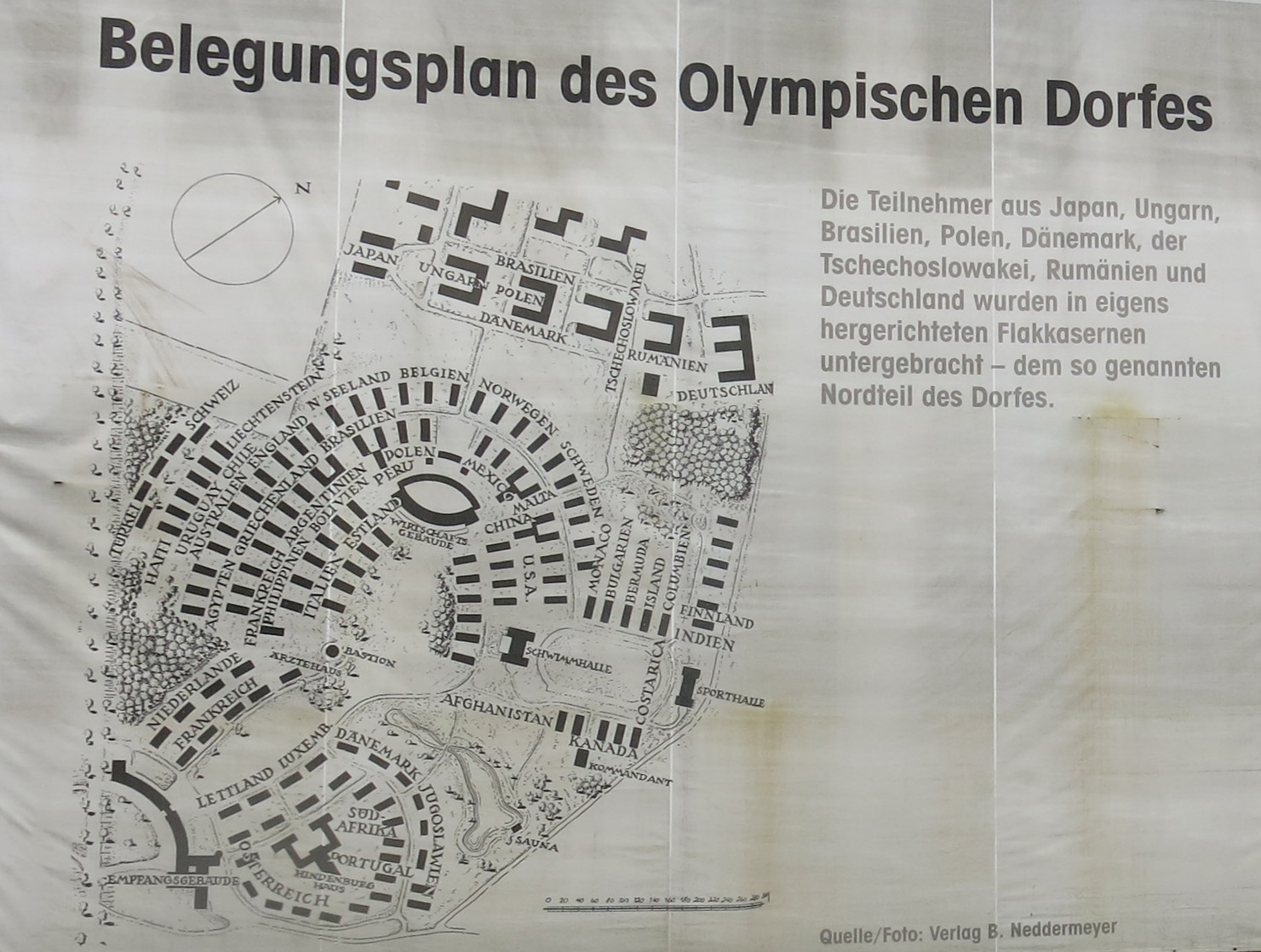
Occupancy plan for the northern part of the village divided by participating nations
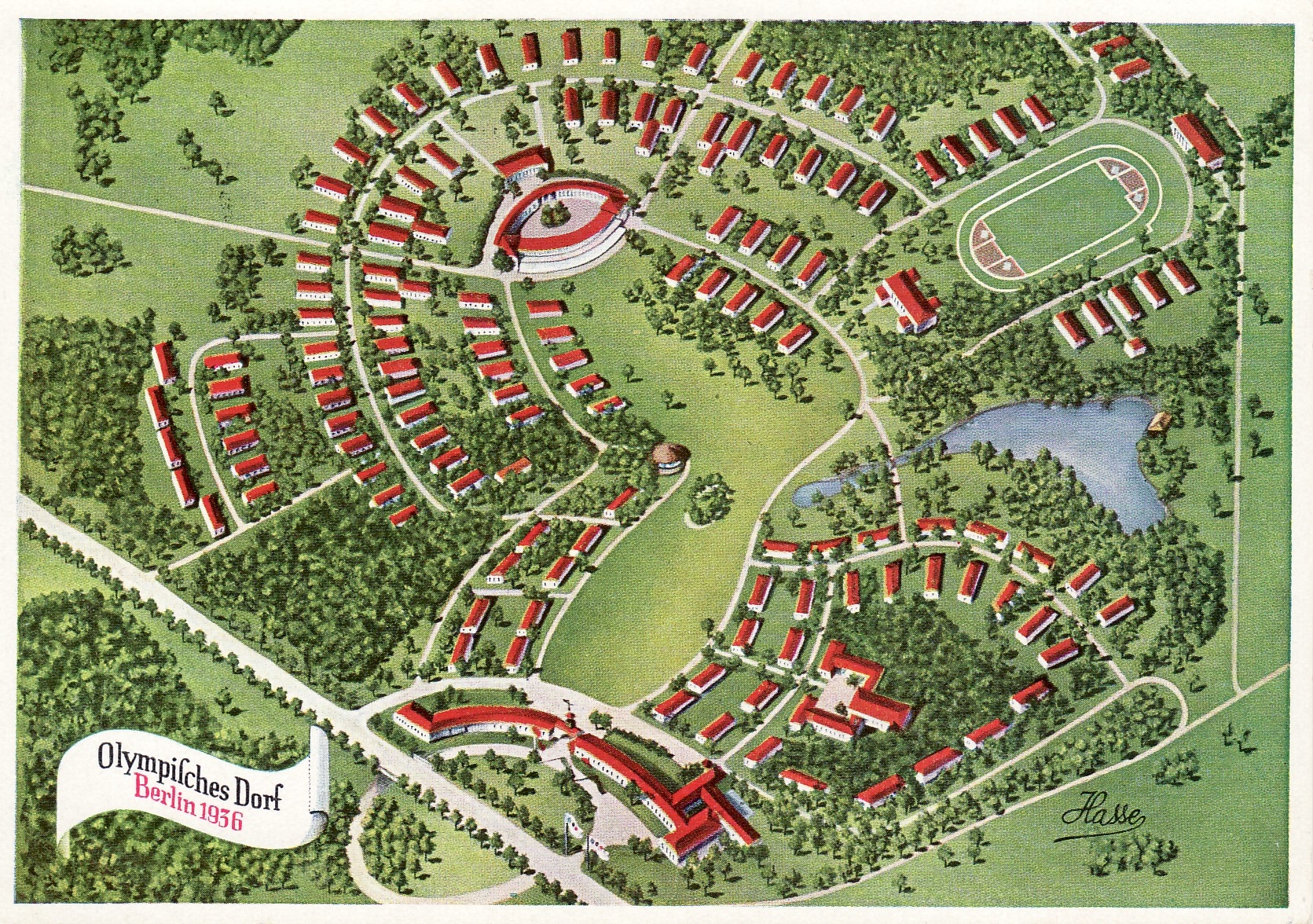
And the whole village
The Olympic Village under Soviet Occupation
After World War II and during the Cold War, the Olympic Village in Elstal was taken over by Soviet forces. The area was located in the Soviet occupation zone of East Germany, and the village took on a completely new role as a military base.
Transition to military base
When the war ended in 1945, the Soviet forces took over the village. It had previously been used by the German army during the war, but now it was to serve as housing and headquarters for Soviet soldiers and their families.
Use of the village
The Soviet forces rebuilt the village to meet their needs. The original Olympic-era buildings were preserved, but they were modified to serve as housing, offices, and storage facilities. New facilities, such as schools, shops, and recreational areas, were also built to support the Soviet soldiers and their families.
The village became a closed military zone during the Cold War, with limited access for civilians. It was an isolated world where Soviet forces lived and worked.
Withdrawal
After the end of the Cold War and the reunification of Germany in 1990, Soviet (later Russian) forces began to withdraw from the area. In the early 1990s, the village was abandoned and began to fall into disrepair, as no one was to maintain it anymore.
Conservation and restoration today
The village has been restored and converted into a modern residential complex, but parts of it are still open to the public.
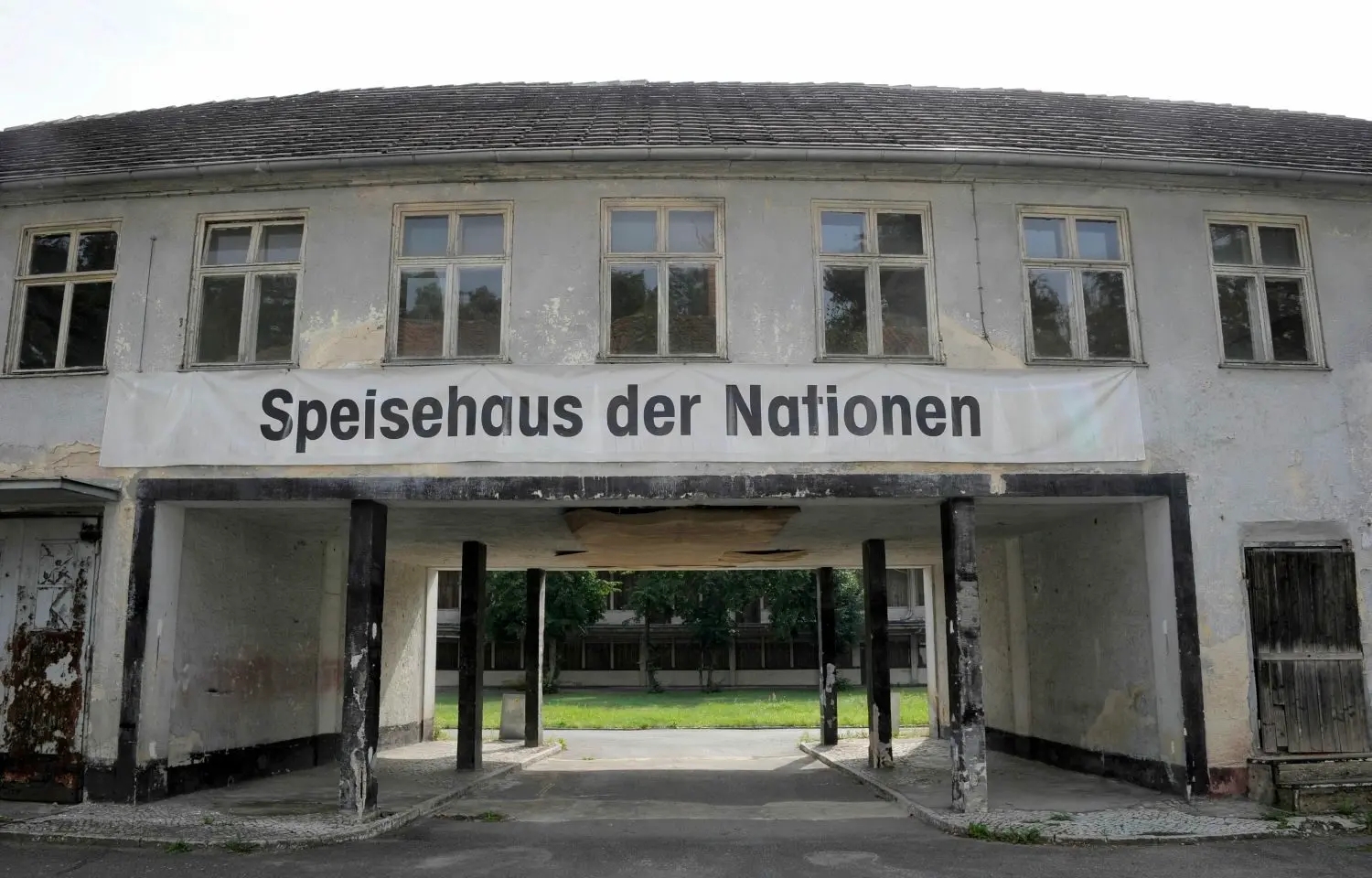
"The Dining Hall of Nations"
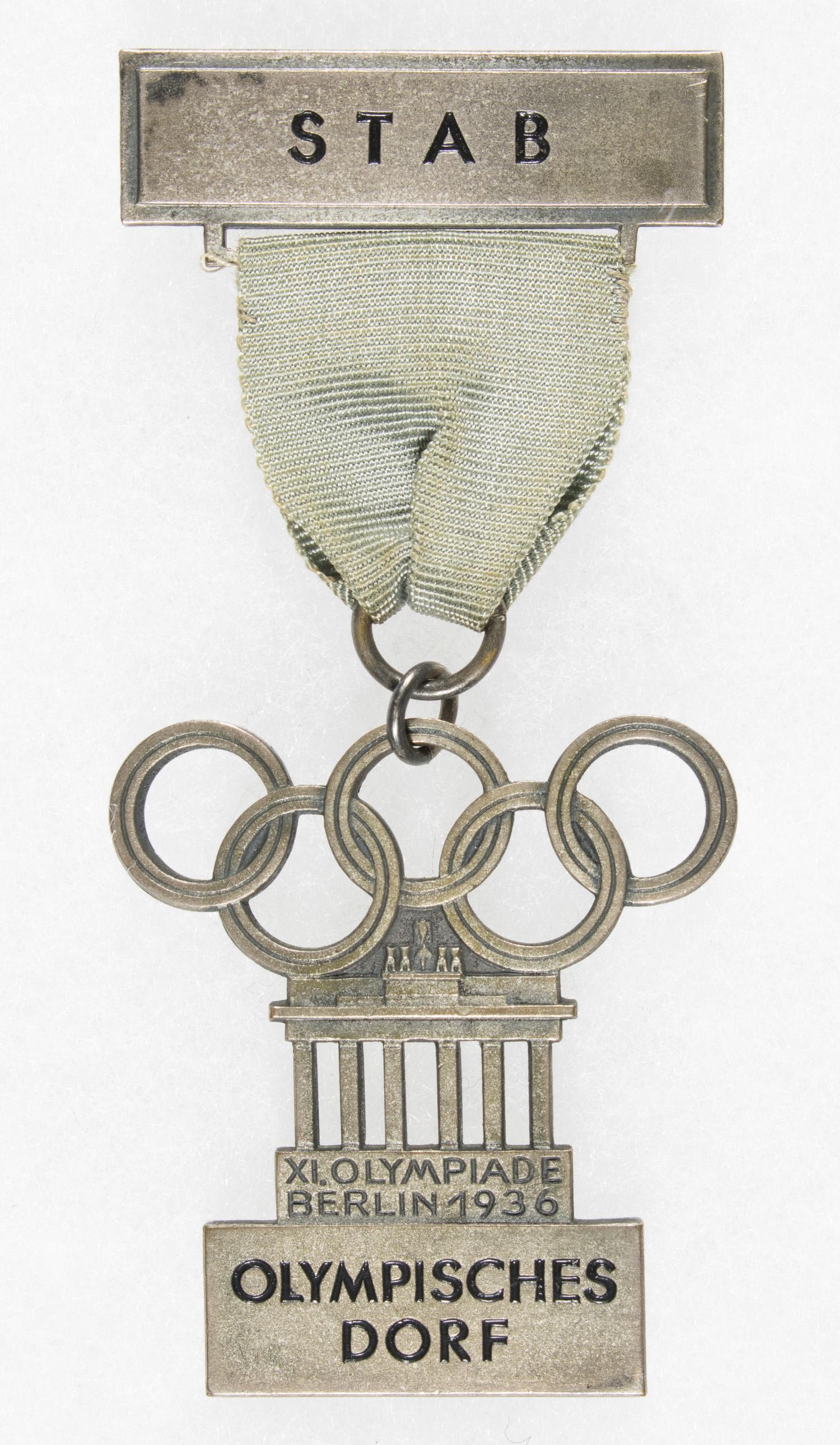
"1936 Berlin Olympic Village Staff Badge"
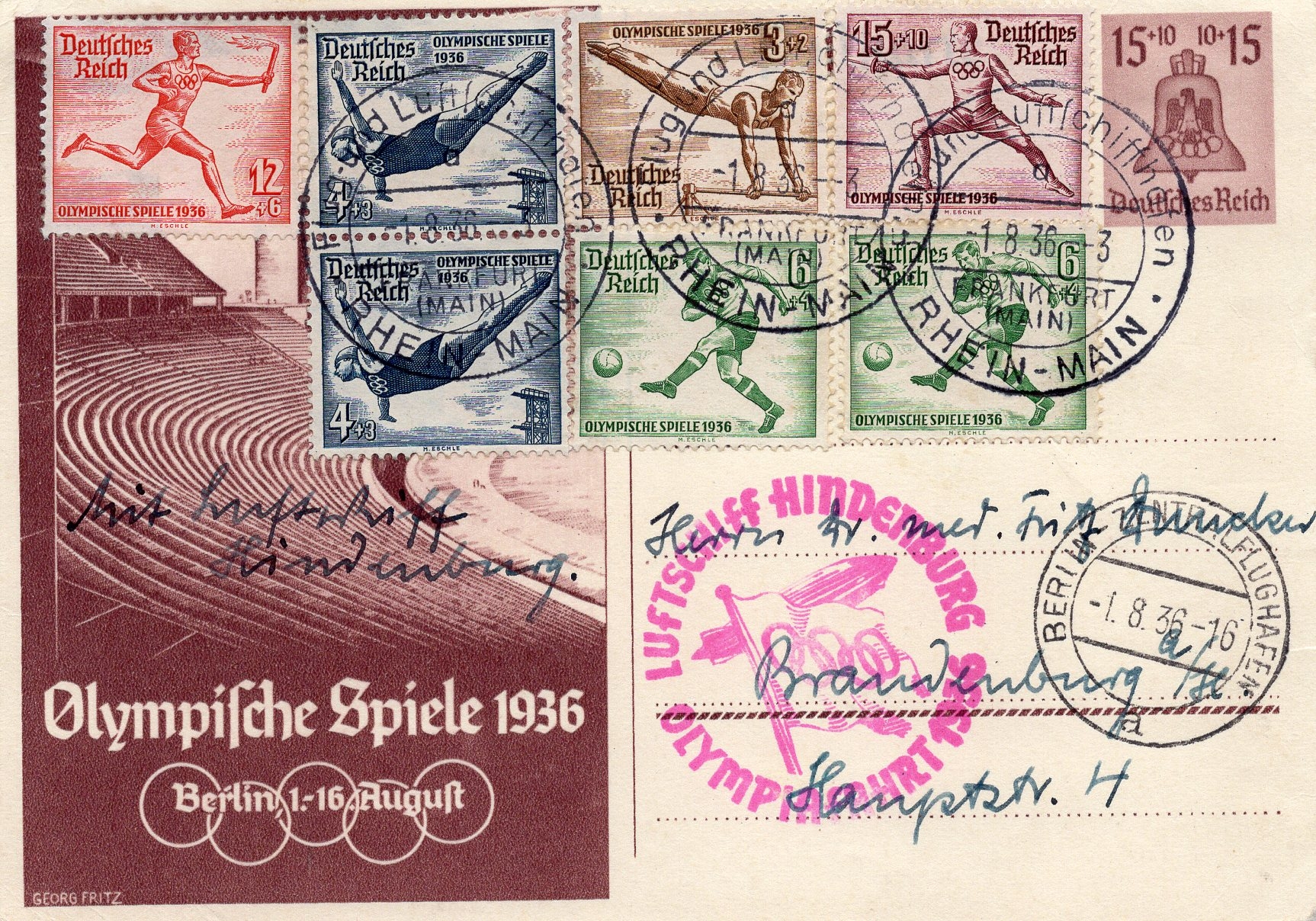
"Postcard sent with the Luftschiff Hindenburg on the airship's "Olympiafahrt" on the very day
of the opening of the Olympic Games - 1 August 1936"
The Luftschiff Hindenburg's "Olympiafahrt" was a significant propaganda trip that the famous German airship made during the 1936 Summer Olympics in Berlin. The trip was part of Nazi Germany's extensive PR campaign to promote the regime's technological and organizational strength on the international stage. Although the "Olympiafahrt" was a success, the Hindenburg's reputation was ruined the following year by the Lakehurst disaster (1937). Nazi Germany still used zeppelins for propaganda, but after the accident, airships lost their status as the future of aviation.
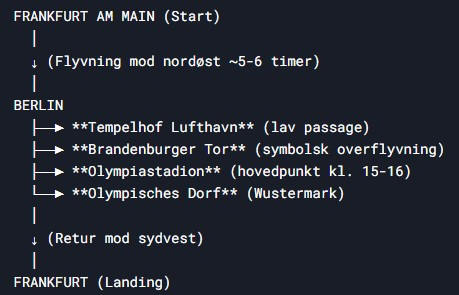
Hindenburgs "Olympiafahrt" – Route (1. august 1936)
Address:
Olympisches Dorf 1936
Am Olympischen Dorf 1
14641 Wustermark / Elstal
Tyskland
Guidede tours:
Can be booked via 'The Historia Elstal e.V.´s'
website.
Berlin is always worth a visit - summer or winter - but where to go! Here are some slightly unusual and very different suggestions for places I like to go.

Interesting places
A B C
D E F
G H I J K
L M N O P Q R S
S T U V X Y Z
Recreational areas:
Food and drinks:
Postcard Berlin, Sebastianstraße, Berliner Mauer Shortcut to postcards of the Berlin Wall
Link:
The 1936 Olympic Village - 1936
A recommendation
Berlin's landmark is a bear
I have visited Berlin for many years. The first time was in the late 70s with a school
class where the stay made such a big impression on me that I have been coming there
very often ever since.
The first times I visited the city, it was brutally divided into East and West and
separated by the famous and infamous Berlin Wall, which from one day to the next
separated families and friends.
The history of the construction of the Berlin Wall is long and begins in the division of Germany
after World War II, where the four victors and allies - the Soviet Union, the United States, England and France divided the country
between them. The capital, Berlin, from which the Allies were to jointly rule Germany, was also divided into four occupation zones,
which each Allied ruled, however, in accordance with the overall agreements the four Allies had jointly
But the marriage was not a happy one and, in short, the differences between the United States, England and France, on the one hand, and
the Soviet Union, on the other, became so big that cooperation was almost impossible.
The lack of cooperation led the Soviet Union to voluntarily decide to form the state of the GDR
in their part of Germany, where West Berlin were located - now as a desert island in the east.
In the GDR, however, they had the problem that many of its inhabitants would rather live in the somewhat richer "West", where the Americans, unlike the Russians,
provided financial assistance for the reconstruction after the "total war". In the Soviet-occupied German territories, the Russians instead
dismantled most of the production equipment and moved it to the Soviet Union, and to make matters worse, the Germans were also ordered to
pay war damages.
As the flow of refugees from the GDR increased, often by several thousand people a day, the
then government of the GDR felt compelled, with the consent of the Soviet Union, to confine its population, otherwise within a few years there would be so few people
left in the state no longer really would work. The flight to the West among young people, skilled and highly educated was so that the situation was unsustainable
and something had to be done.
The iconic photo of the soldier who escaped from the
GDR to the west
Well arrived in West Berlin, you had to sign up in e.g. the Marienfelde refugee camp to apply for a residence permit.
Here one was interrogated and later typically assigned to a job according to qualifications and an apartment. Many former GDR citizens have passed through
Marienfelde, where there now also is a museum. It is estimated that approx. 1.35 million people passed through the camp in Marienfelde until the fall of
the wall in 1989.
West Berlin was a thorn in the side of the so-called communist regimes, which on several
occasions tried to get the West Allies to leave Berlin and thus let it become part of the GDR, but when that failed, the Berlin Wall or "Antifaschistischer Schutzwall"
as it was officially called in the GDR was built in 1961.
"Notaufnahmelager"
Marienfelde (refugee camp)
The "Schandmauer" - or wall of shame as it was called in most of the western world - came to surround the whole of West Berlin.
The day of shame - 13 August 1961 - was the day when a 41 km long wall was started and further developed the following years right up to the fall of the wall in 1989. Memorial
It is estimated that approx. 14,000 border soldiers guarded the wall
- which by the way consisted of several walls - even though 860,000 mines had been laid, more than 300
watchtowers erected, trenches built and more than 600 well-trained watchdogs exposed.
Throughout the period from 1961 - 1989, it is estimated that there were more than 5,000 escape attempts and that
a little more than 3,000 people were apprehended. Some of these escape attempts took place through the 57 escape
tunnels dug under the Berlin Wall. In all, it is believed that 190 died during escape attempts.
World War II and the Berlin Wall - even after its dismantling - have of course left their mark
on the city of Berlin and there is no doubt that these events have had a colossal historical significance, but one
must not forget that Berlin is also an extremely interesting and modern city, where life is lived and where the
cultural offerings are enormous.
Wanted


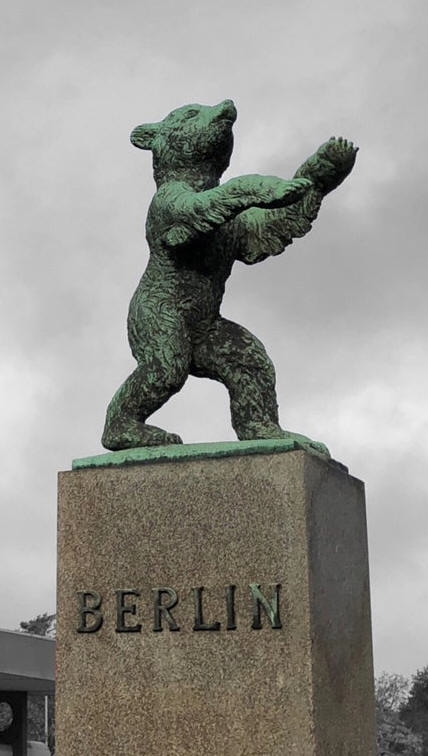
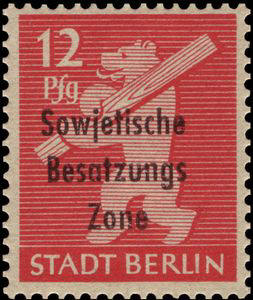
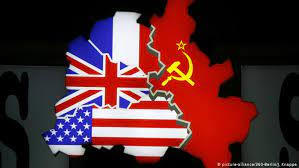
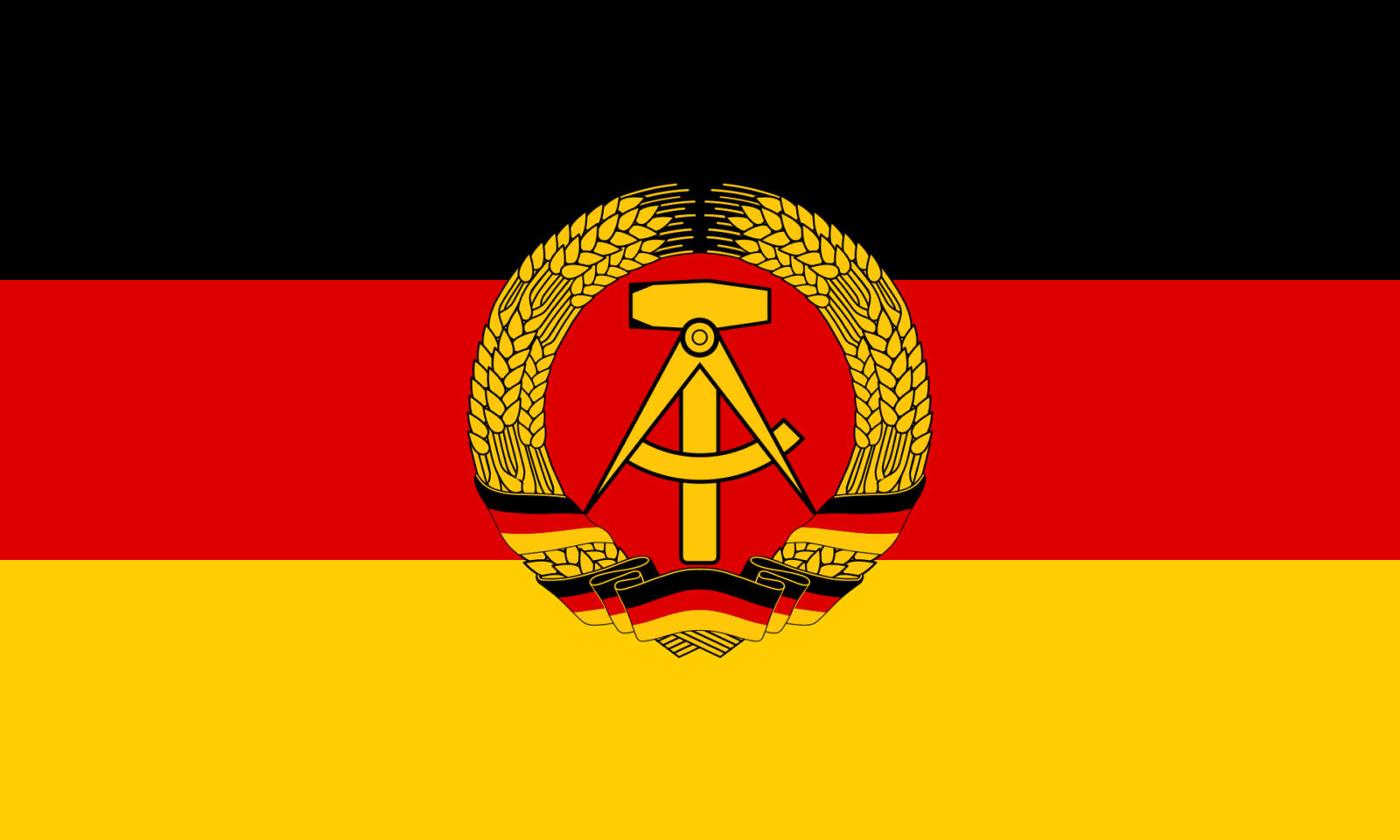
The GDR had otherwise promised its population that after some hard years
of toil and toil, the reward would come, but when you could see, not
least via western TV, how the nation actually fell further and further
behind in relation to the west, many began to doubt truth value of the
statement. For the same reason, large parts of the population began to
seep to the west and this could most easily happen via Berlin, where the
borders between the various sectors were still open.
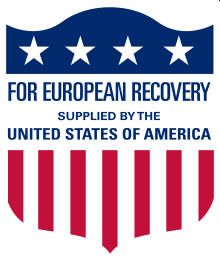 When a GDR citizen had decided to become a "republican
refugee", he or she typically dressed like people from the West
and then subsequently bought a train ticket to Berlin , if one did not already live there. In Berlin, the trip typically continued by "U-bahn" to West Berlin.
During such an escape, no significant luggage could be included, as one would easily be recognized as what one was - a refugee - and then taken to the police
station for questioning and imprisonment. Although there was free passage to West Berlin, many East German border guards were posted at the border and were
largely solely responsible for keeping an eye on any refugees.
When a GDR citizen had decided to become a "republican
refugee", he or she typically dressed like people from the West
and then subsequently bought a train ticket to Berlin , if one did not already live there. In Berlin, the trip typically continued by "U-bahn" to West Berlin.
During such an escape, no significant luggage could be included, as one would easily be recognized as what one was - a refugee - and then taken to the police
station for questioning and imprisonment. Although there was free passage to West Berlin, many East German border guards were posted at the border and were
largely solely responsible for keeping an eye on any refugees.
